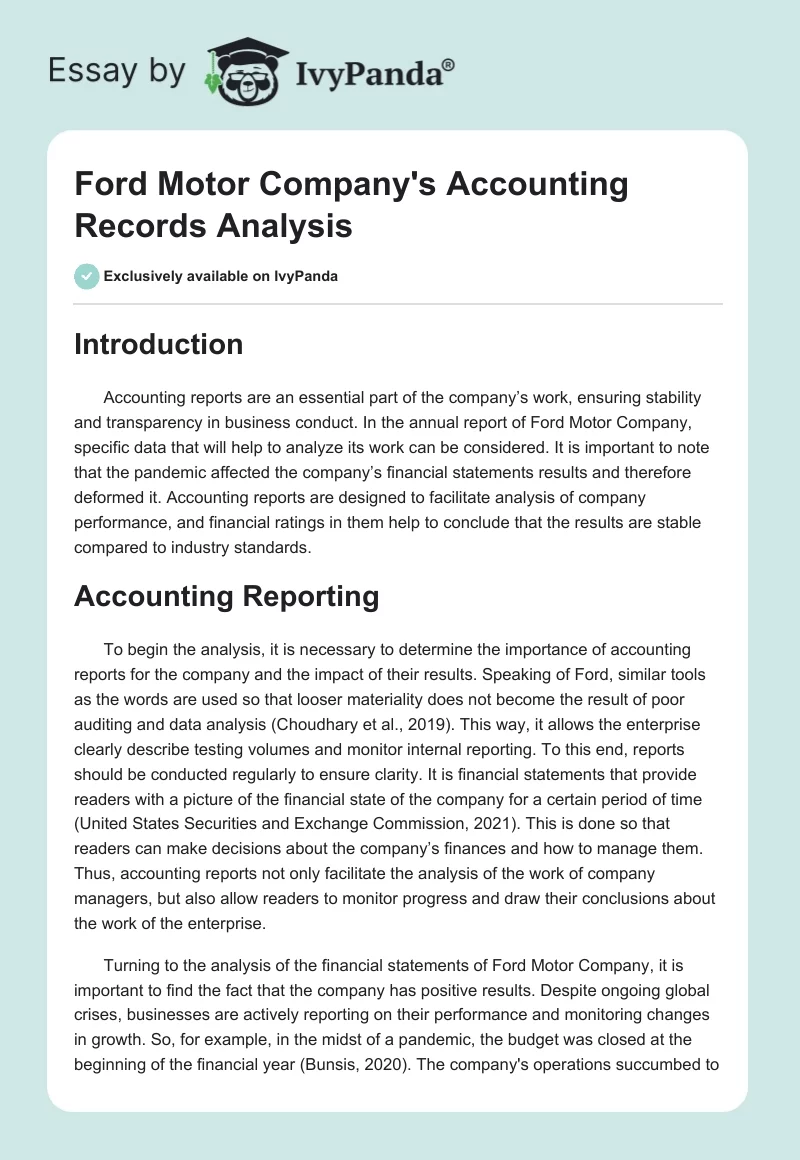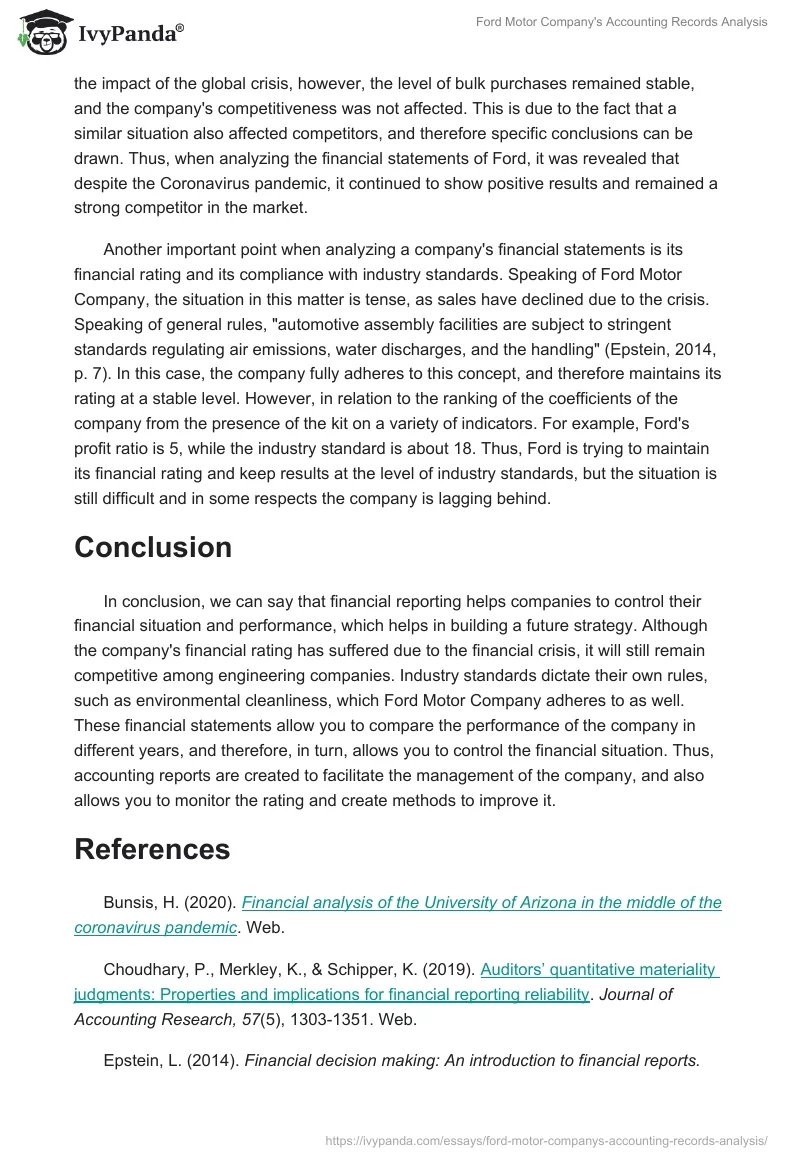Introduction
Accounting reports are an essential part of the company’s work, ensuring stability and transparency in business conduct. In the annual report of Ford Motor Company, specific data that will help to analyze its work can be considered. It is important to note that the pandemic affected the company’s financial statements results and therefore deformed it. Accounting reports are designed to facilitate analysis of company performance, and financial ratings in them help to conclude that the results are stable compared to industry standards.
Accounting Reporting
To begin the analysis, it is necessary to determine the importance of accounting reports for the company and the impact of their results. Speaking of Ford, similar tools as the words are used so that looser materiality does not become the result of poor auditing and data analysis (Choudhary et al., 2019). This way, it allows the enterprise clearly describe testing volumes and monitor internal reporting. To this end, reports should be conducted regularly to ensure clarity. It is financial statements that provide readers with a picture of the financial state of the company for a certain period of time (United States Securities and Exchange Commission, 2021). This is done so that readers can make decisions about the company’s finances and how to manage them. Thus, accounting reports not only facilitate the analysis of the work of company managers, but also allow readers to monitor progress and draw their conclusions about the work of the enterprise.
Turning to the analysis of the financial statements of Ford Motor Company, it is important to find the fact that the company has positive results. Despite ongoing global crises, businesses are actively reporting on their performance and monitoring changes in growth. So, for example, in the midst of a pandemic, the budget was closed at the beginning of the financial year (Bunsis, 2020). The company’s operations succumbed to the impact of the global crisis, however, the level of bulk purchases remained stable, and the company’s competitiveness was not affected. This is due to the fact that a similar situation also affected competitors, and therefore specific conclusions can be drawn. Thus, when analyzing the financial statements of Ford, it was revealed that despite the Coronavirus pandemic, it continued to show positive results and remained a strong competitor in the market.
Another important point when analyzing a company’s financial statements is its financial rating and its compliance with industry standards. Speaking of Ford Motor Company, the situation in this matter is tense, as sales have declined due to the crisis. Speaking of general rules, “automotive assembly facilities are subject to stringent standards regulating air emissions, water discharges, and the handling” (Epstein, 2014, p. 7). In this case, the company fully adheres to this concept, and therefore maintains its rating at a stable level. However, in relation to the ranking of the coefficients of the company from the presence of the kit on a variety of indicators. For example, Ford’s profit ratio is 5, while the industry standard is about 18. Thus, Ford is trying to maintain its financial rating and keep results at the level of industry standards, but the situation is still difficult and in some respects the company is lagging behind.
Conclusion
In conclusion, we can say that financial reporting helps companies to control their financial situation and performance, which helps in building a future strategy. Although the company’s financial rating has suffered due to the financial crisis, it will still remain competitive among engineering companies. Industry standards dictate their own rules, such as environmental cleanliness, which Ford Motor Company adheres to as well. These financial statements allow you to compare the performance of the company in different years, and therefore, in turn, allows you to control the financial situation. Thus, accounting reports are created to facilitate the management of the company, and also allows you to monitor the rating and create methods to improve it.
References
Bunsis, H. (2020). Financial analysis of the University of Arizona in the middle of the coronavirus pandemic. Web.
Choudhary, P., Merkley, K., & Schipper, K. (2019). Auditors’ quantitative materiality judgments: Properties and implications for financial reporting reliability. Journal of Accounting Research, 57(5), 1303-1351. Web.
Epstein, L. (2014). Financial decision making: An introduction to financial reports.
San Diego, CA: Bridgepoint Education.
United States Securities and Exchange Commission. (2021). Ford Motor Company: Annual report pursuant. Web.


